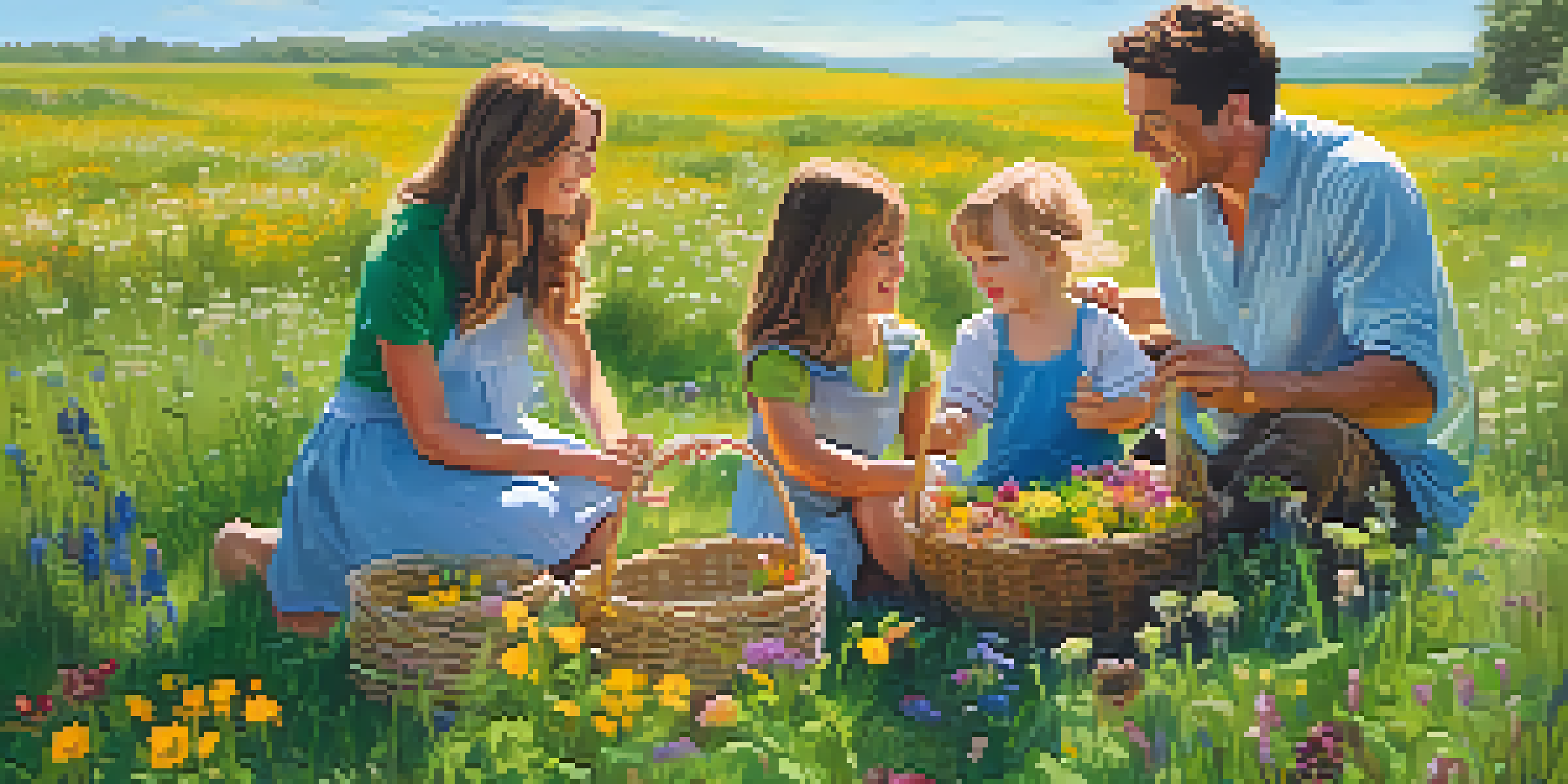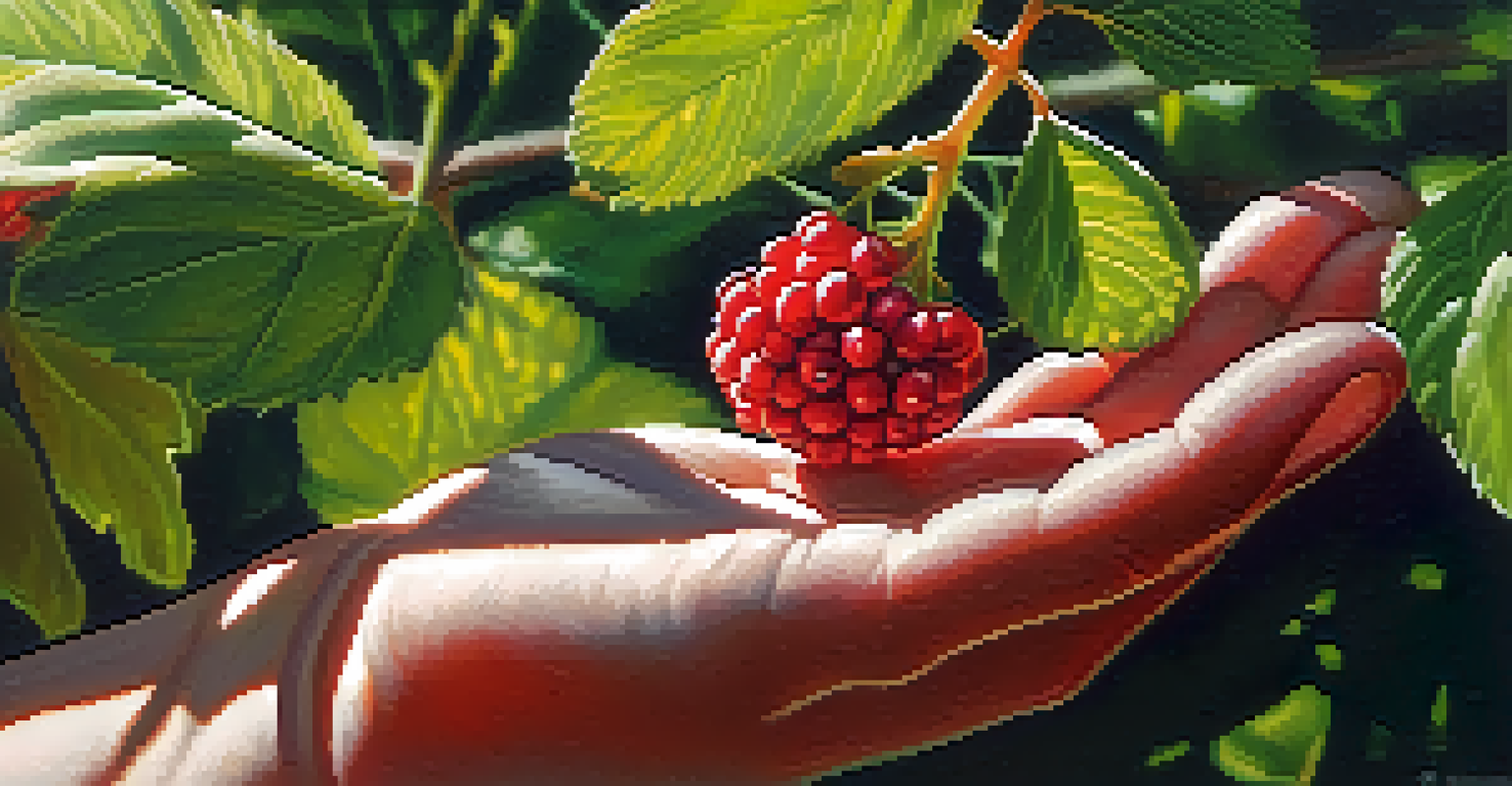Foraging with Kids: Teaching Children About Wild Foods

Why Foraging is a Great Activity for Families
Foraging is more than just gathering wild foods; it’s an adventure! It encourages kids to connect with nature and learn about the environment around them. This hands-on experience can spark curiosity and foster a love for the outdoors.
In every walk with nature one receives far more than he seeks.
When children engage in foraging, they become active participants in their food journey. They learn where their food comes from and the importance of sustainability. This knowledge can instill a sense of responsibility towards the planet, making them more mindful consumers.
Moreover, foraging can be a delightful bonding experience for families. Imagine strolling through a lush forest or a sunny meadow, chatting and laughing while searching for edible treasures. It’s an opportunity to create lasting memories and deepen family connections.
Essential Safety Tips for Foraging with Kids
Safety is paramount when foraging, especially with kids. Before heading out, ensure you have a reliable field guide or a knowledgeable adult with you. This can help you correctly identify edible plants and avoid toxic look-alikes.

Teach your children the basics of foraging safety, such as not touching or eating any plant without permission. Reinforce the idea that some plants can be harmful, and it’s crucial to respect nature. This creates a sense of caution and awareness about the natural world.
Foraging Sparks Family Connections
Foraging together allows families to bond while exploring nature and creating lasting memories.
Always start in familiar areas where you know the plants are safe. Parks, gardens, or supervised nature trails are excellent places to begin your foraging adventures. Remember, it’s better to be safe than sorry when it comes to wild foods!
Fun and Engaging Foraging Activities for Kids
To keep kids engaged, turn foraging into a fun scavenger hunt! Create a checklist of edible plants they can look for, like dandelions, wild garlic, or berries. This interactive approach turns learning into a game, making it exciting for young explorers.
The best way to find yourself is to lose yourself in the service of others.
Another enjoyable activity could be a 'taste test' where kids can sample different wild foods they find. Supervise them very carefully, and ensure they try only the safe ones. This hands-on experience can make them more adventurous eaters and willing to try new things.
You might even consider crafting a nature journal, where kids can document their finds with drawings or notes. This not only boosts creativity but also reinforces their learning. Plus, it’s a fantastic way to reflect on their foraging adventures together.
Teaching Kids to Respect Nature While Foraging
Foraging isn’t just about collecting food; it’s also about respecting nature. Teach your children to appreciate the environment by explaining the importance of biodiversity and the role each plant plays in the ecosystem. This understanding can nurture a sense of stewardship in them.
Encourage kids to forage responsibly by only taking what they need and leaving some for wildlife. This practice helps maintain the balance of nature and shows kids that their actions have consequences. It’s a valuable lesson in sustainability they’ll carry with them.
Safety is Key in Foraging Adventures
Teaching kids about foraging safety ensures they learn to respect nature and avoid harmful plants.
Additionally, emphasize the importance of leaving the environment as they found it. For instance, if they pick a wildflower, remind them to leave some behind for others to enjoy. This respect for nature can create a deeper connection and appreciation for the outdoors.
Identifying Safe and Edible Wild Foods
Identifying wild foods can be thrilling yet challenging. Start with commonly found plants that are easy to recognize, like clover, chickweed, or nettles. Use colorful pictures and descriptions from a field guide to help kids learn how to identify these plants safely.
Engage kids in the identification process by asking them questions about the plants they see. For example, 'What color are the flowers?' or 'How does it smell?' This not only reinforces their learning but also encourages observation skills.
As they become more confident, introduce them to the concept of foraging seasons. Discuss how certain plants are only available at specific times of the year. This can help them understand the cycles of nature and the importance of seasonal eating.
Cooking and Preparing Wild Foods Together
After a successful foraging adventure, the fun doesn’t have to end! Involve kids in preparing the wild foods you’ve gathered. They can help wash, chop, and cook, giving them a sense of accomplishment and a hands-on experience in the kitchen.
Use this opportunity to teach them about different cooking methods and how they can incorporate wild foods into their meals. You might make a simple salad with foraged greens or a wild berry smoothie. This not only nurtures their culinary skills but also reinforces the connection between foraging and food.
Learning Through Fun Activities
Engaging kids with interactive foraging activities cultivates their curiosity and appreciation for the environment.
Encouraging them to be creative in the kitchen can also lead to exciting discoveries. Who knows? They might invent a new family recipe using their foraged ingredients that everyone will love!
Creating Lasting Memories through Foraging
Foraging is a unique way to create cherished family memories. The shared experiences of exploring, learning, and tasting wild foods together can strengthen your family bond. Every foraging trip becomes a story worth telling, filled with laughter and discoveries.
Consider documenting your adventures through photos or videos. Capture those candid moments of joy when your child finds a rare berry or identifies a new plant. These memories can be revisited and cherished for years to come.

Ultimately, foraging teaches kids valuable lessons about nature, food, and family. Whether it’s the thrill of the hunt or the joy of cooking together, these experiences will stay with them long after the day is over, fostering a lifelong love for the outdoors.